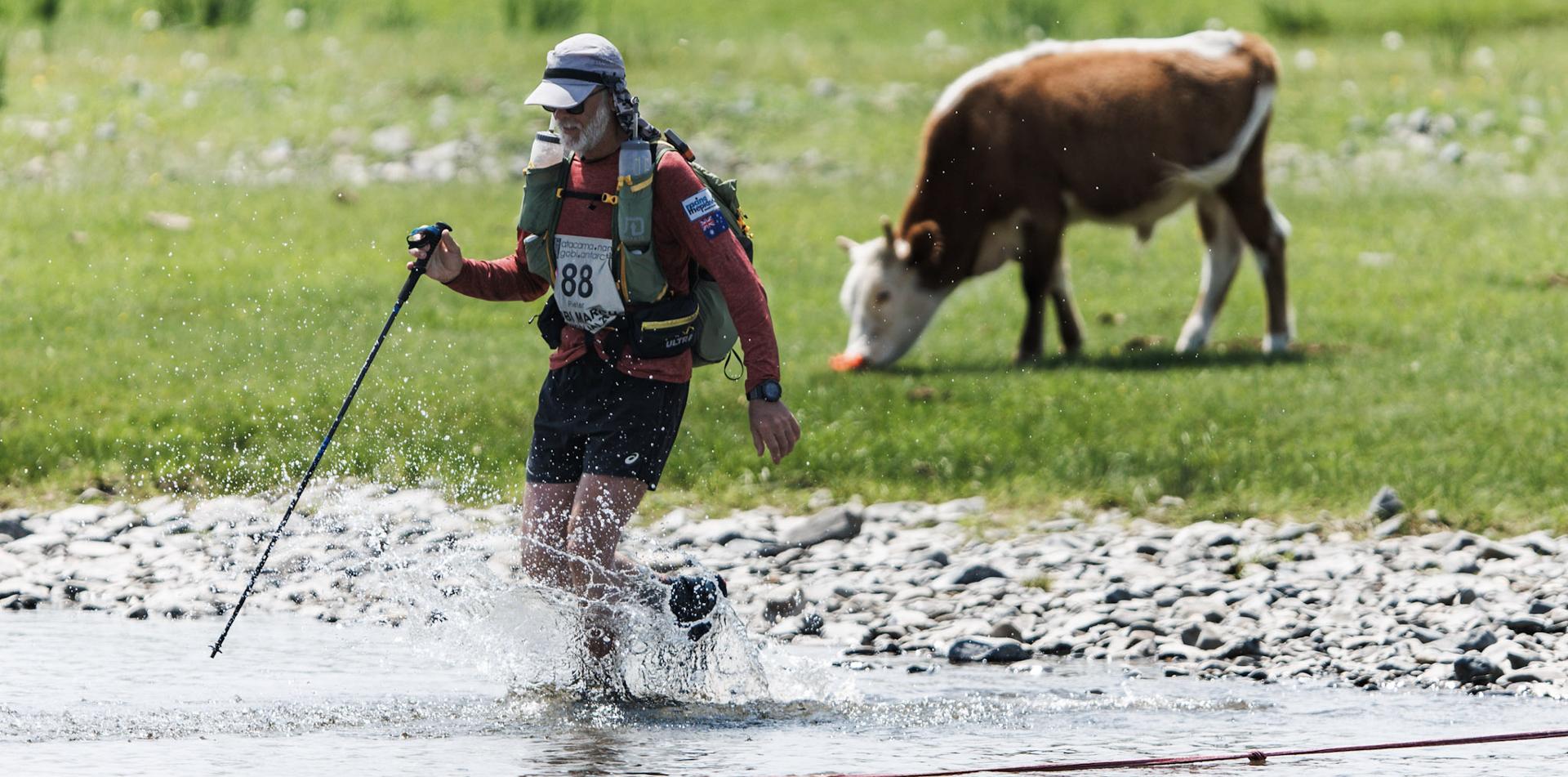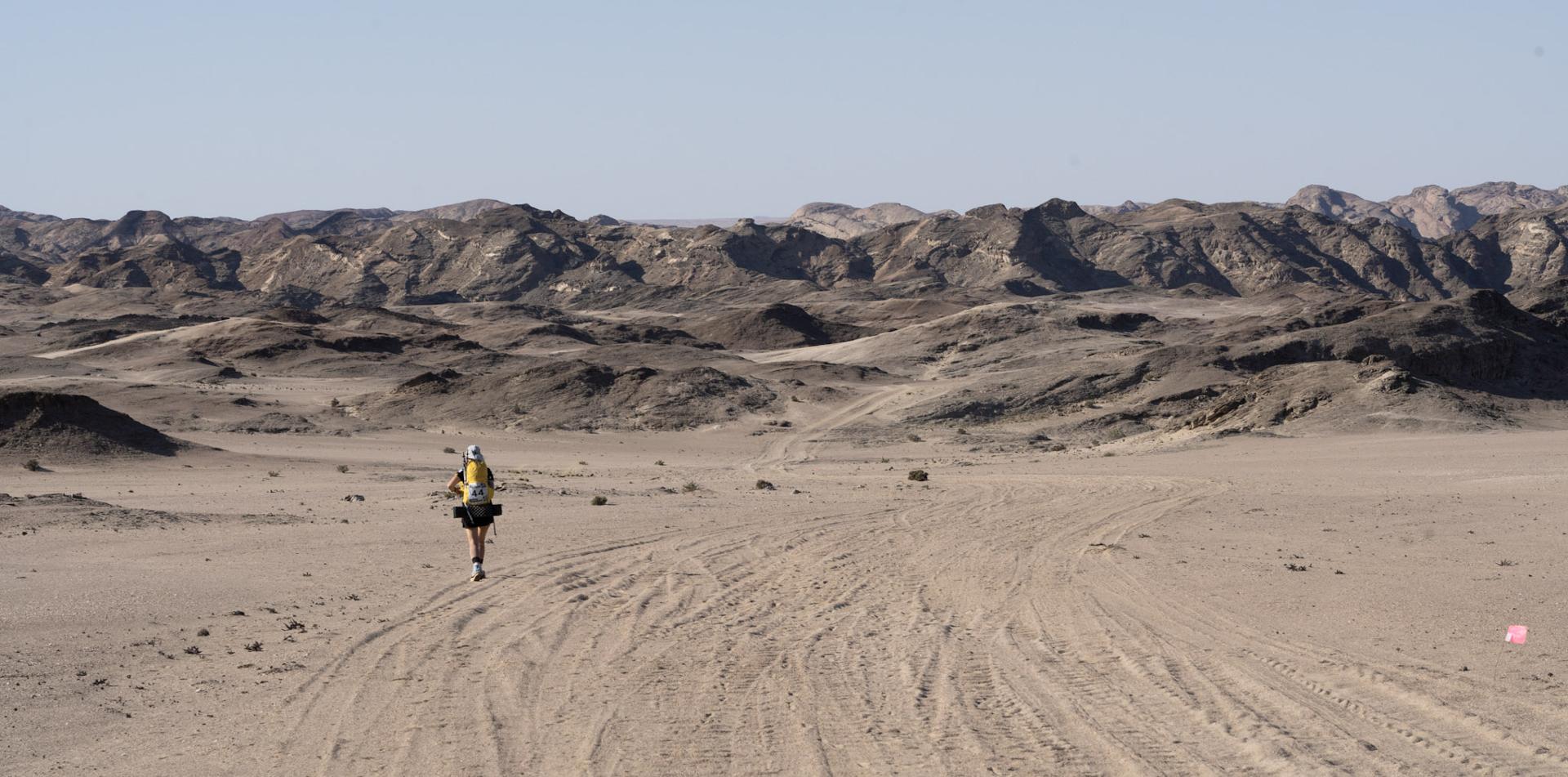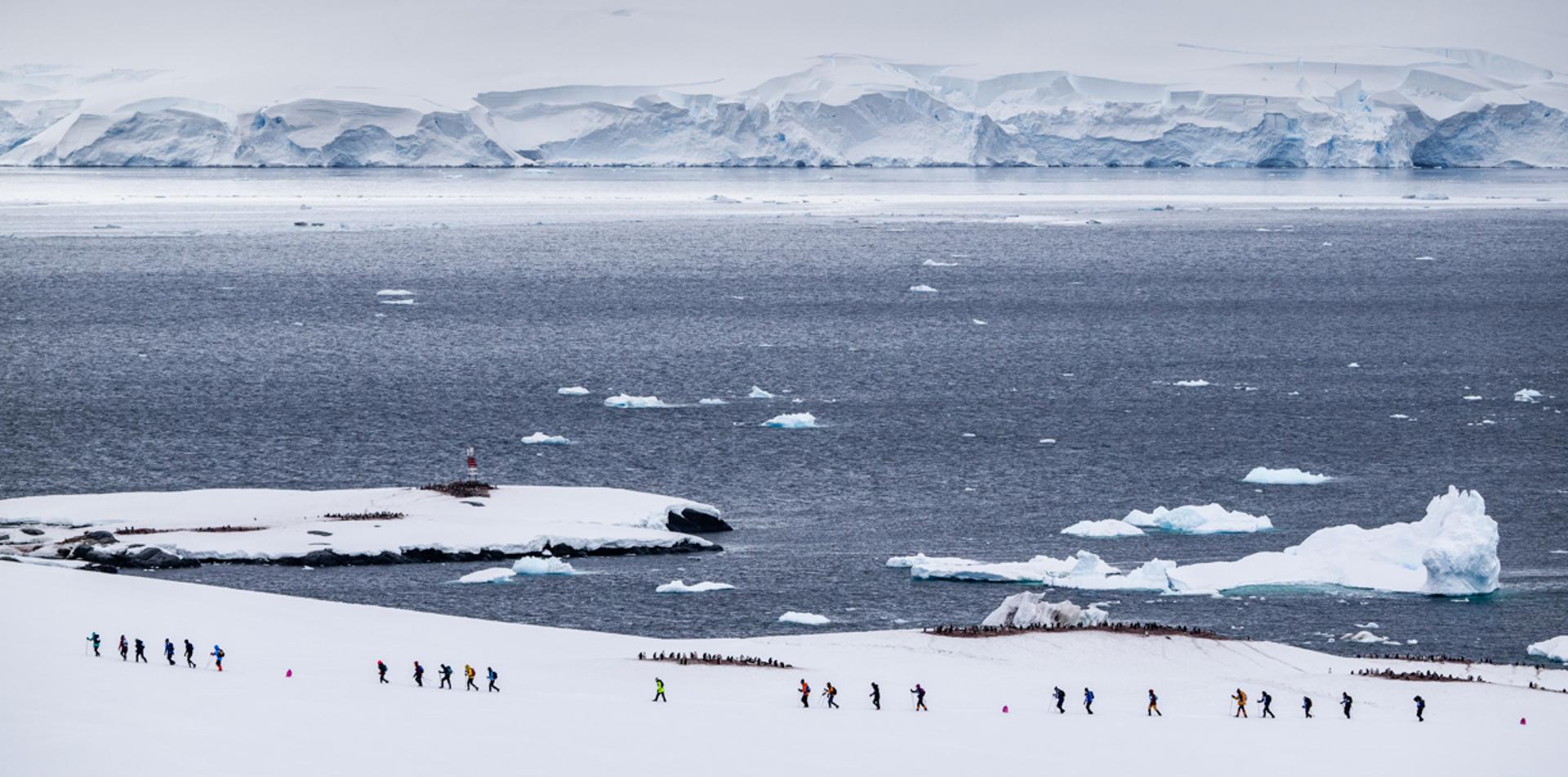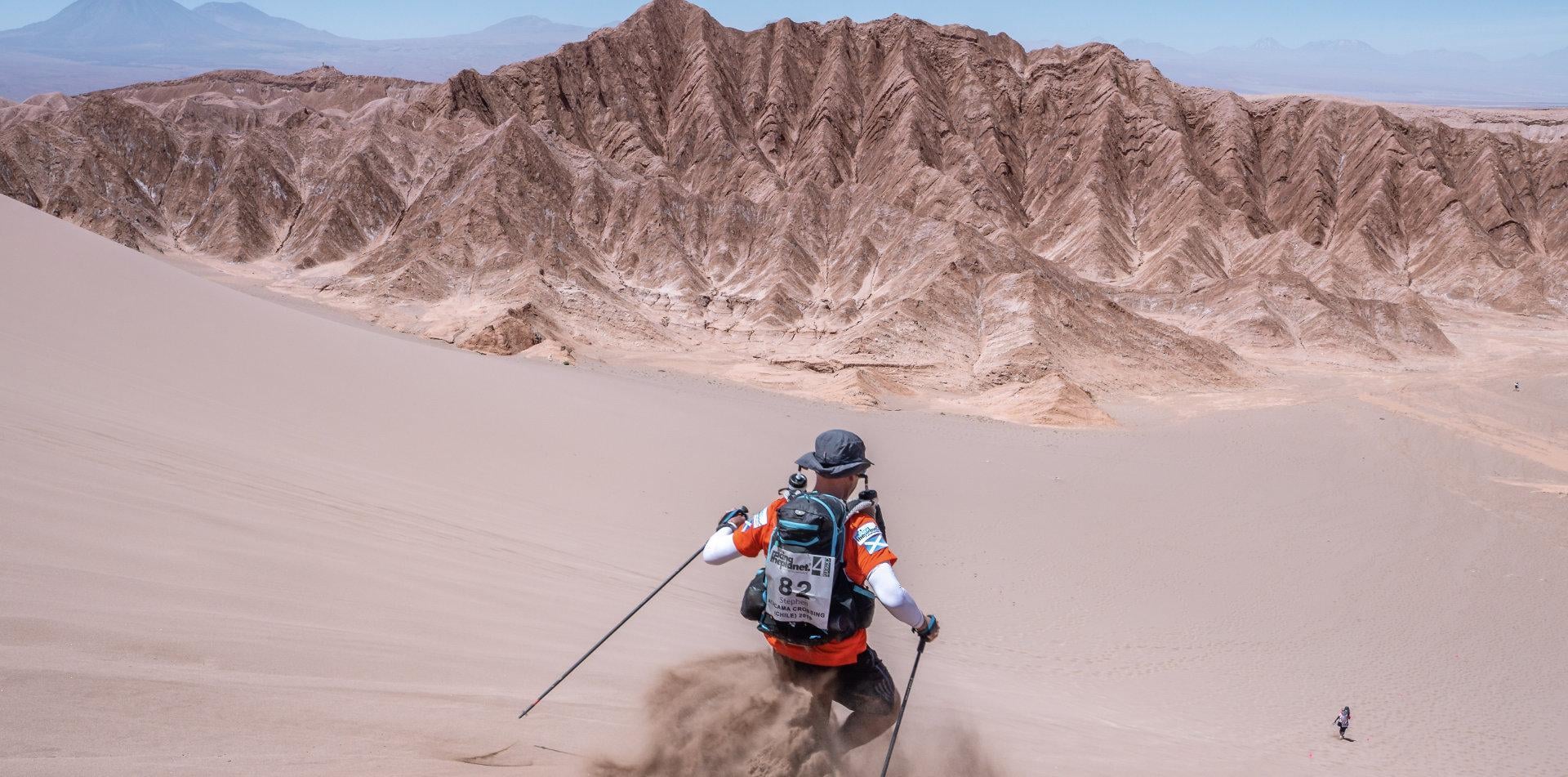Running in Antarctica - Tips for Running in the Snow by Jeremy Inabnit
For the last few years, I’ve lived in Vaasa, Finland so I’ve become familiar with how to train when 4-6 months of the year are in winter conditions. This experience has informed how I would go about my training and preparation if I were planning to race in an ultramarathon or stage race in Antarctica.
The single best thing an athlete can do to prepare for a race in Antarctica is to train in similar conditions in the months leading up to the race. This is going to be highly impractical for most people living in the Northern Hemisphere when the Antarctica race takes place in November, so what follows are a few suggestions that may be more realistic and can complement a well-structured ultramarathon training program.
- Train in similar conditions during the preceding winter. You may not be able to transfer to race day much of the specific physical training adaptations that come from running in snow when it is followed by a long season of ‘normal’ trail running, but you will at least gain the valuable experience of knowing what running in snow is like. You will find out which muscles are working harder than usual and where you may need to build strength. You will have the opportunity to test your clothing, shoes, run food, hydration system, and other gear.
- Include a well-rounded strength training program. When running in the snow, you will work harder and in different ways than you may be used to, so it can benefit you to implement a resistance training program to develop full body strength and be more ready for any kind of terrain. It may be obvious to work on lower body pushing or squatting movements to strengthen muscles needed for propelling forward in snow, but a variety of movements should be implemented, and the upper body shouldn’t be neglected. Most runners, and especially stage racers who carry weighted packs, can benefit from even a couple days per week of full body strength training.

If you decide you want to explore the first suggestion and it will be your first time training in winter conditions, here are a few things to keep in mind.
- Terrain and conditions vary. I’m using the term ‘winter conditions’ because the terrain and weather is not one set condition. You may experience falling snow, sleet, rain, and (hopefully not) hail. The ground below may be snow, ice, or slush or any combination of all of these. Snow-covered ground or trails may be paved by machine, have a few tracks from other hikers and runners, or may be untouched. Your gait and mechanics will shift and you may find yourself taking on a wider stance with a shorter stride. Much like running in the sand, your legs will work harder to push off the shifting and sinking snow in order to propel your body forward.
- Warm up well. You can start to warm up inside with some dynamic movements and perhaps some jump rope or cycling. At the very least, take the first several minutes of running easy and make sure your body and muscles are warm before adding any intensity.
- Dress in layers. The first layer, closest to the skin, should be a snug moisture-wicking base layer. On top of that will be a thicker layer to add warmth and the outer-most layer should be waterproof and windproof. You may even want to consider layering gloves. I’ve found it helpful to wear a thin pair of gloves that still allow me to use my fingers to adjust things underneath a pair of thicker gloves or mittens. It’s difficult to know how much warmth my hands will need but I know I will always need at least some covering.
- Use a shoe system that is waterproofed and spiked. Spikes allow you to move more safely over ice. (Fortunately, the terrain of the Antarctica races is mostly snow.) Some trail running shoe brands, like Icebug and Salomon, make Gore-Tex waterproof shoes with built-in spikes. Alternatively, you can use your preferred trail shoes and have spikes installed on them. However, neither of these options are allowed in Antarctica just in case a spike breaks off. These suggestions are applicable to training for most places in snow, but keep in mind that if you are going to race in Antarctica with RacingThePlanet, you'll be required to use the Kahtoola slip-on microspikes, which works in conjunction with your waterproof (Gore-Tex) shoes.
- Get your shoes in sync with your socks. If you are going to buy new winter shoes, try them on with the socks you plan on wearing in cold conditions. You may need a larger size to accommodate thicker socks.
- Sip water continuously, and perhaps on a schedule. There are two reasons to closely monitor hydration when running in cold temperatures. First, it is common that runners don’t feel as thirsty but even so, they still need to stay hydrated. Second, in freezing temperatures, water inside bottles will start to freeze, most quickly at the bite valve and straw, so sipping often and keeping movement through the hydration system is one way of preventing a freeze. If you can keep the threads of the bottle dry where the top screws on, you can prevent that part from freezing which will allow you the option to take the top off and drink directly from the bottle in case the straw freezes up.
- Choose suitable cold weather run food. Select snacks that won’t freeze and are easy to open with gloves on. Generally, a food that has less water content will work better. You can test these foods by putting them in your refrigerator or freezer for a day. (If you are racing in Antarctica, keep in mind the IAATO guidelines about which foods you are allowed to bring.)
- Dry things correctly. A lot of garments, gear, and shoes are meant to be air-dried so check label instructions before doing anything other than that, like throwing them in a drier or sauna.
Some of these winter training suggestions can be directly applied to racing in Antarctica. In addition to what’s been mentioned, there are a few other things I’d do if I was joining the race.
- Pack more food than usual. If you are expending more energy to move through snow compared to a similar run duration in training, then you will require more calories than you are used to. And if you do get cold, you will burn even more calories to stay warm. Fortunately, when racing in Antarctica, you will not be required to carry your food during a stage so it can only benefit you to bring more food than you would take during another desert race.
- Bring multiple layers of clothing. If you haven’t had a chance to really test out your clothing in cold weather, it may be difficult to know exactly what to wear. Have a few options available. Personally, I find it’s usually good to be a little cold at the start line. If I’m too warm and comfortable at the start line, I will probably get too warm once the race gets going and I get moving.
- Limit exposure to daylight in advance of going to bed. There may be up to 20 hours of daylight when you race in Antarctica, and it can be difficult to go to bed before 10pm if it’s still bright outside. During the summers in Finland, I find it helpful to start closing the drapes and turning lights down at least an hour or more before I even try to fall asleep.
Whether you get out to Antarctica or find another magical wintery place to run or hike, remember to have fun, enjoy the uniqueness of it all, and don’t ever check your pace!
I’d be interested in hearing if you found any of these points useful. Let me know if you have any feedback or questions!
Instagram: @runfar_liftheavy_
Email: [email protected]
Website: runfarliftheavy.com







 Newsletter
Newsletter
 Online Store
Online Store





